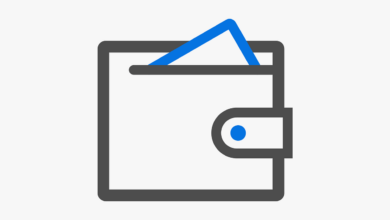Defend Against Cryptojacking – Stay Safe Online

In the ever-evolving landscape of digital finance, where innovation frequently dances hand in hand with malevolence, one cannot overlook the insidious rise of cryptojacking. This phenomenon, characterized by the unauthorized use of someone else’s computer to mine cryptocurrency, poses a significant threat to both individual users and institutions alike. To truly comprehend the implications of cryptojacking, it is essential to delve into its mechanics and understand the underlying strategies employed by cybercriminals. Grasping this concept is not merely an exercise in intellectual curiosity; rather, it is imperative for fostering a robust defense against such threats.
Awareness is the cornerstone of effective protection. By embracing a proactive stance and enhancing our understanding of cryptojacking, we can develop preventive measures tailored to our unique environments. The techniques employed by malicious actors often exploit vulnerabilities that can be mitigated through informed decision-making and vigilant practices. As we navigate this complex interplay between technology and security, it becomes increasingly clear that a comprehensive grasp of cryptojacking is vital in crafting effective defense strategies.
In this exploration of cryptojacking, we will dissect its mechanisms, assess the potential risks involved, and elucidate practical techniques for safeguarding our digital assets. By fostering a culture of awareness and equipping ourselves with the necessary knowledge, we can fortify our defenses against this stealthy form of exploitation. Let us embark on this journey together, with an unwavering commitment to understanding and protecting ourselves from the shadows that lurk within the digital realm.
Understanding Cryptojacking and How to Protect Against It
In the labyrinthine world of cryptocurrency, a nefarious phenomenon has emerged–cryptojacking. This insidious practice involves unauthorized use of computing resources to mine cryptocurrencies, often without the knowledge or consent of the device owner. As our understanding of this threat evolves, it becomes imperative to enhance our awareness of cryptojacking, its consequences, and the preventive measures that can be taken to safeguard our digital assets.
Comprehending the mechanics of cryptojacking is crucial for effective defense strategies. Typically, malicious actors exploit vulnerabilities in software or employ deceptive tactics such as phishing emails to inject mining scripts into unsuspecting users’ devices. This not only drains system resources but can also lead to significant financial losses and compromised personal data. The need for a robust understanding of these techniques cannot be overstated; it is the first step toward effective protection against such threats.
Awareness plays a pivotal role in combating cryptojacking. Many individuals remain oblivious to the signs that their devices may be under attack, which can include sluggish performance, overheating, and increased energy consumption. By fostering a culture of vigilance and educating users about these symptoms, we can empower individuals to take proactive steps in identifying potential breaches early on. This heightened awareness serves as a foundational layer in our defense against cryptojacking.
Preventive measures are essential components of any comprehensive security strategy. Utilizing reputable antivirus software can significantly reduce the risk of infection from mining scripts. Additionally, employing browser extensions that block cryptocurrency mining scripts can further bolster defenses. Regularly updating software and operating systems is also critical; many updates contain patches for vulnerabilities that could be exploited by cryptojackers. These techniques should be integrated into routine digital hygiene practices for optimal protection.
Grasping the broader implications of cryptojacking extends beyond individual security; it encompasses ethical considerations within the cryptocurrency ecosystem. As mining activities become more resource-intensive, the environmental impact raises pressing questions about sustainability and responsible usage of technology. Recognizing these dimensions can inform our approach to both personal security and collective responsibility as stewards of digital innovation.
In conclusion, developing an informed perspective on cryptojacking requires a multifaceted approach that combines understanding, awareness, and preventive action. As we navigate the complexities of this digital age, embracing effective defense strategies will not only protect personal assets but also contribute to a more secure and sustainable cryptocurrency landscape. By committing to continuous education and remaining vigilant against emerging threats, we can mitigate the risks associated with cryptojacking and foster resilience in our digital endeavors.
Understanding Cryptojacking and How to Protect Against It
Cryptojacking represents a pernicious and often unrecognized threat in the realm of cybersecurity, manifesting as the unauthorized use of someone else’s computing resources to mine cryptocurrency. This practice exploits the computational power of devices–be it personal computers, servers, or even mobile phones–without the knowledge or consent of their owners. As the cryptocurrency market continues to flourish, so too does the prevalence of cryptojacking, which can severely compromise system performance and lead to significant financial losses. Understanding this phenomenon is essential for both individuals and organizations striving to safeguard their digital assets.
Grasping the intricacies of cryptojacking requires a nuanced comprehension of how these malicious activities unfold. Typically, attackers employ sophisticated techniques such as malicious scripts embedded in websites or phishing emails designed to lure victims. Once executed, these scripts hijack processing power, redirecting it towards mining operations that benefit the attacker. The insidious nature of cryptojacking lies not only in its stealth but also in its ability to cause wear and tear on hardware, ultimately diminishing its lifespan. Thus, a clear awareness of how such attacks can infiltrate systems is vital for effective defense strategies.
To counteract the growing threat of cryptojacking, organizations must adopt a multifaceted approach to protection. Preventive measures should include implementing robust security protocols, such as maintaining up-to-date antivirus software and employing firewalls that can detect unusual activities. Additionally, educating employees about the risks associated with cryptojacking and training them to recognize potential threats are crucial components of an effective defense strategy. By fostering a culture of cybersecurity awareness, organizations can significantly mitigate their vulnerability to these attacks.
Furthermore, understanding the role of browser extensions in cryptojacking is paramount. Some extensions may inadvertently enable cryptojacking by allowing unauthorized scripts to run in the background while users browse. Therefore, individuals should regularly scrutinize their installed extensions and remove any that seem unnecessary or suspicious. Utilizing ad-blockers can also serve as a protective barrier against malicious advertisements that might deploy cryptojacking scripts. These preventive techniques empower users to take control over their digital environments.
Another layer of defense involves monitoring system performance for signs indicative of cryptojacking activity. For instance, unexplained spikes in CPU usage or sudden system slowdowns can signal an ongoing attack. By maintaining vigilant oversight and employing tools that analyze system performance metrics, both individuals and organizations can enhance their capability to detect potential intrusions early on. Comprehending these warning signs can lead to timely interventions that thwart cryptojacking attempts before they escalate into more severe issues.
In conclusion, awareness and understanding of cryptojacking are indispensable in today’s increasingly digital landscape. As cybercriminals grow more adept at exploiting vulnerabilities, adopting comprehensive defense strategies becomes imperative for safeguarding computing resources. By embracing preventive techniques, fostering a culture of vigilance, and remaining informed about evolving threats, we enhance our resilience against cryptojacking–a challenge that demands our unwavering attention in the pursuit of secure digital engagement.
Understanding Cryptojacking and How to Protect Against It
Cryptojacking emerges as a nefarious phenomenon in the digital landscape, where malicious actors exploit the computational power of unsuspecting users to mine cryptocurrencies. This process typically unfolds through the injection of scripts into websites or applications that run silently in the background, consuming CPU resources without the victim’s awareness. The simplicity of this technique allows attackers to capitalize on unprotected devices, demonstrating a fascinating intersection between cybersecurity and economic exploitation. Grasping the mechanics of cryptojacking is crucial for both individuals and organizations seeking to secure their digital environments.
Awareness of cryptojacking is the first line of defense against this insidious threat. Users often remain oblivious to the fact that their devices are being hijacked for unauthorized cryptocurrency mining. Education about the signs–such as unexpected slowdowns, increased heat generation, or unusual spikes in electricity bills–can significantly enhance an individual’s ability to recognize potential cryptojacking incidents. By fostering an understanding among users about these symptoms, we can collectively raise consciousness regarding the evolving threats posed by cybercriminals.
In terms of protection techniques, implementing robust security measures is vital for safeguarding against cryptojacking. Employing comprehensive antivirus software that detects and neutralizes cryptojacking scripts serves as a primary strategy. Additionally, ad-blockers can prevent malicious scripts from loading in the first place, further fortifying one’s digital defenses. Regular updates to software and operating systems are equally important; they not only patch vulnerabilities but also enhance overall system resilience against newly developed defense strategies employed by cybercriminals.
Comprehending cryptojacking extends beyond mere awareness; it encompasses the adoption of preventive measures tailored for both personal and organizational use. Instituting strict access controls, monitoring network traffic for anomalies, and conducting regular audits can empower users to thwart potential attacks proactively. By integrating these defense strategies into daily practices, individuals can cultivate a more secure online experience while contributing to the broader fight against cybercrime. As technology continues to evolve, so too must our understanding and response to threats like cryptojacking, ensuring that we remain vigilant in this digital age.
Signs of Cryptojacking Infection and Protective Strategies
In the ever-evolving landscape of cybersecurity, understanding the signs of cryptojacking infection is crucial for both individuals and organizations. Cryptojacking occurs when malicious actors hijack computing resources to mine cryptocurrencies without the knowledge or consent of the user. One of the first indicators of such an infection is a noticeable decrease in system performance. If your computer operates significantly slower than usual, or if it suddenly overheats, these could be early warning signs of a cryptojacking attack. Additionally, increased energy consumption can signal that your device is working harder than normal, possibly due to unauthorized mining activities.
To effectively combat the threat of cryptojacking, awareness is paramount. Users must comprehend the various methods through which these attacks can infiltrate systems. For instance, malicious scripts embedded in websites or deceptive software downloads are common vectors for cryptojacking. By cultivating an understanding of these tactics, individuals can better protect themselves. Regularly updating software and using reputable antivirus programs are essential preventive measures that enhance security against such intrusions.
Grasping the intricacies of cryptojacking also involves recognizing its broader implications on network security. Organizations face not just the immediate impact on performance but also potential data breaches as attackers exploit vulnerabilities within compromised systems. Heightened awareness among employees about suspicious behaviors, such as unexpected browser tabs opening or unsolicited pop-ups, can serve as an effective defense strategy. Training programs focused on cybersecurity can empower users to identify threats before they escalate.
When considering protection techniques against cryptojacking, implementing robust network monitoring tools becomes vital. These tools can help detect unusual spikes in CPU usage indicative of unauthorized activities. Furthermore, employing ad-blockers and script blockers can mitigate risks by preventing potentially harmful content from loading in the first place. Understanding how to configure these tools properly is essential for maximizing their effectiveness in safeguarding against cryptojacking attempts.
Comprehending the preventive measures available requires ongoing vigilance. Regular system audits and performance checks can help identify anomalies early on, allowing for prompt action before any significant damage occurs. Additionally, maintaining updated backups ensures that valuable data remains secure even if a device becomes compromised. This proactive approach fosters a culture of cybersecurity awareness that benefits both personal users and larger organizations alike.
In conclusion, the threat of cryptojacking highlights the necessity for continuous education and adaptive protective strategies in our increasingly digital world. By cultivating a deeper understanding of this form of cybercrime and implementing effective defense techniques, users can significantly reduce their risk exposure. The combination of heightened awareness and strategic preventive measures forms a robust barrier against the insidious threat of cryptojacking, empowering individuals to navigate the complexities of the digital landscape with greater confidence and security.
Understanding Cryptojacking and Defense Strategies
In the intricate tapestry of our digital existence, where the lines between innovation and exploitation often blur, the phenomenon of cryptojacking emerges as a stark reminder of the vulnerabilities that accompany technological advancement. Cryptojacking, an insidious practice where unauthorized parties hijack computing resources to mine cryptocurrency, poses significant threats to both individual users and corporations alike. Recognizing this threat is not merely about awareness; it’s about comprehending the full scope of its implications and empowering ourselves with effective defense strategies.
To truly grasp the essence of cryptojacking, one must adopt a multifaceted approach. This involves not only understanding the mechanisms behind it but also implementing robust protective measures that can thwart potential attacks. The interplay between awareness and preventive techniques is vital in this endeavor, as knowledge alone does little without the commitment to act upon it.
Strategies for Protection Against Cryptojacking
Effective protection against cryptojacking necessitates a blend of proactive and reactive strategies. Here are some key components to consider:
- Awareness Campaigns: Educating users about the signs of cryptojacking is crucial. Awareness can significantly reduce vulnerability.
- Regular Software Updates: Keeping software up-to-date ensures that known vulnerabilities are patched, diminishing the chances of exploitation.
- Use of Ad Blockers: Many cryptojacking scripts are delivered through malicious advertisements; thus, employing ad blockers can serve as an effective first line of defense.
- Employing Security Extensions: Browsers can be fortified with security extensions designed specifically to detect and block cryptojacking attempts.
- Network Monitoring: Regularly monitoring network traffic helps in identifying unusual behavior indicative of cryptojacking activities.
In conclusion, comprehending and grasping the complexities surrounding cryptojacking is essential for crafting robust defensive measures. As we navigate this digital landscape, let us remain vigilant and informed, employing a diverse array of techniques that not only protect our resources but also foster a culture of cybersecurity awareness. With each proactive step we take, we fortify our defenses against this modern menace, ensuring that our digital domains remain secure and resilient in the face of evolving threats.





